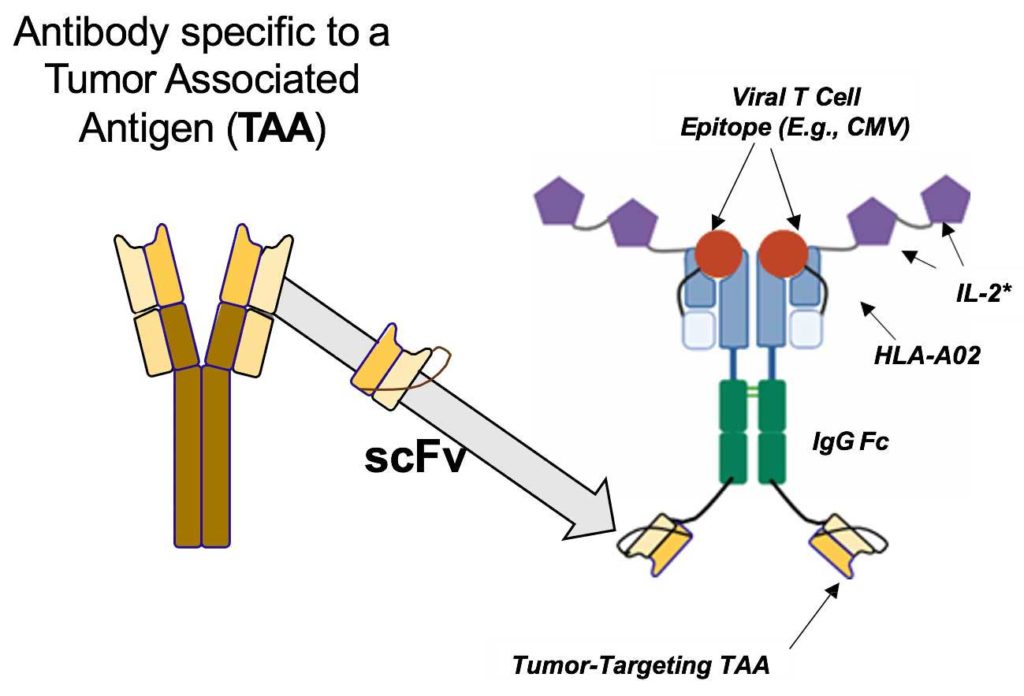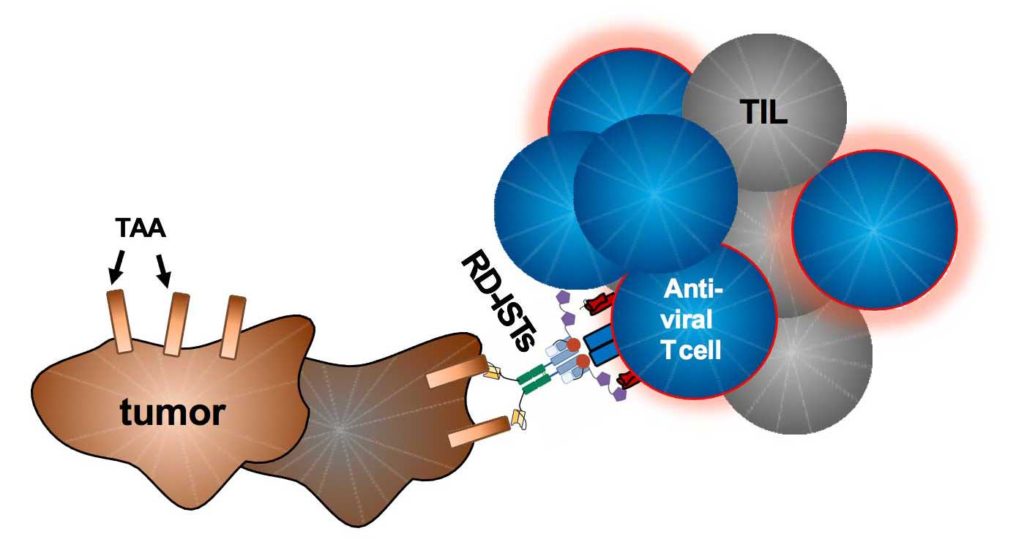RDI-STAT™ Platform
A significant challenge in tumor immunotherapy is tumor resistance whereby a subset of tumors is able to evade T cell detection. Tumors accomplish this by suppressing the production of proteins involved in tumor protein (antigen) processing (called human leukocyte antigen molecules or HLAs) and decreasing presentation of tumor antigens to the immune system.
It is estimated that more than 20%-30% of cancer patients may have tumor cells utilizing this escape mechanism.
The RDI-STAT Platform: Immuno-STATs with Tumor Associated Antigens
RDI-STATs take advantage of the fact that in some cancers there is a significant presence of cytotoxic CD8+ T effector cells that are not tumor specific but instead recognize viral antigens (such as flu or cytomegalovirus). These can be repurposed to attack the tumor itself.
Molecular Design

The RDI-STAT Platform
Signal #1: Includes a viral antigen
Signal#2: Consists of a key immune-stimulant molecule, such as interleukin 2 (IL-2) to enable selective activation of viral-specific T cells. Analogous to Immuno-STATs
Fc backbone: Also analogous to the core framework of Immuno- STATs
scFv: Variable portion of an antibody specific to the Tumor Associated Antigen (TAA) of interest
Mechanism of Action

RDI-STATs Mechanism of Action
RDI-STATs are tethered to a tumor cell via binding to cell-surface antigens (e.g., Trop2, PSMA, mesothelin etc.). This coats the tumor with an RDI-STAT to make it appear like a virally infected cancer cell to the immune system.
The tumor can then be recognized by the anti-viral T cells that become activated by the RDI-STAT IL-2 to kill the tumor cells, including those that have lost HLA expression or the ability to present antigens effectively.

